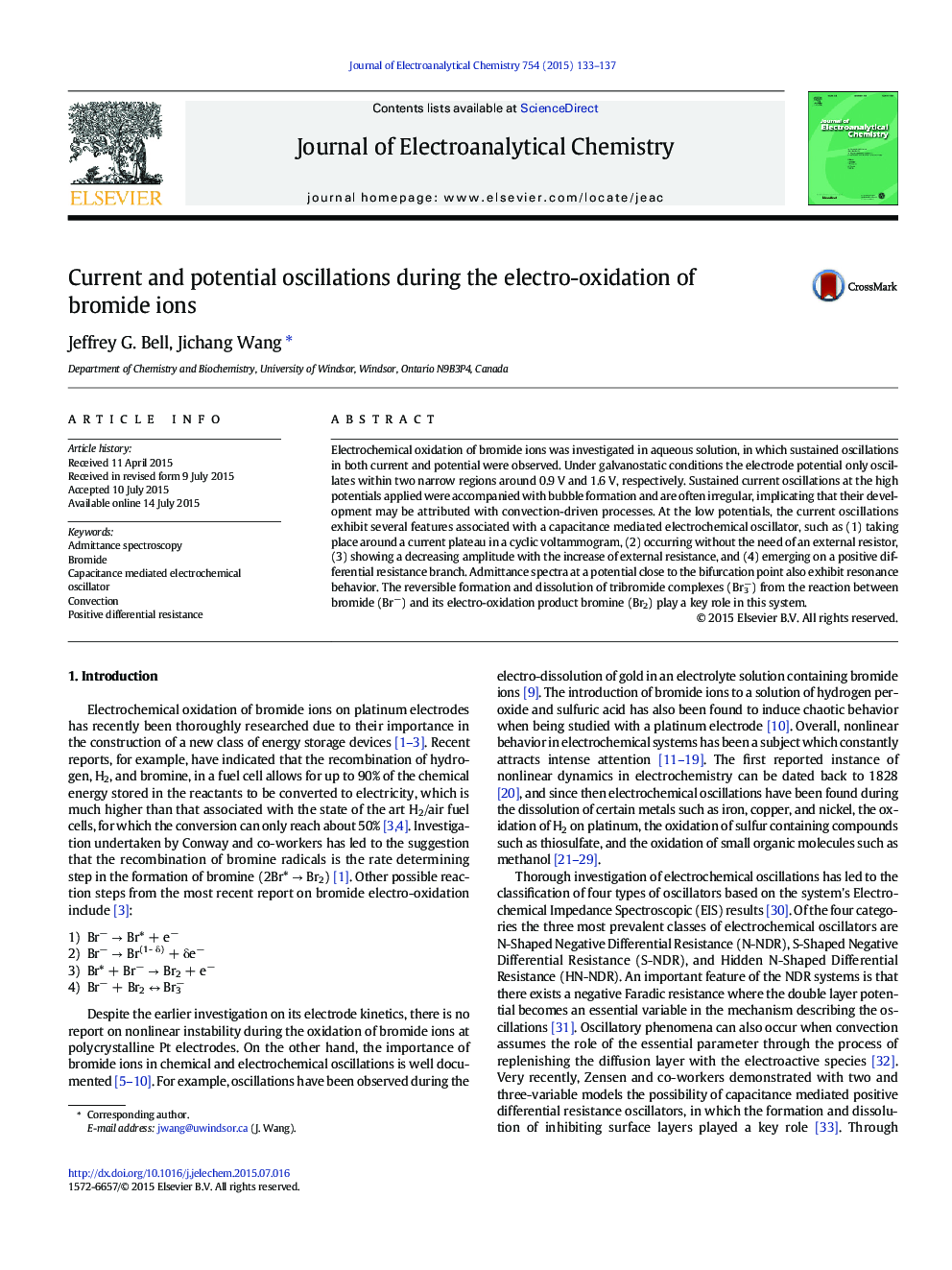| Article ID | Journal | Published Year | Pages | File Type |
|---|---|---|---|---|
| 218187 | Journal of Electroanalytical Chemistry | 2015 | 5 Pages |
•Electro-oxidation of bromide ions exhibits both current and potential oscillations.•Showing features associated to a capacitance mediated electrochemical oscillator•Potential oscillates in regions related to the oxidation of bromide or hydroxide•pH of the solution is not essential in the development of oscillations.
Electrochemical oxidation of bromide ions was investigated in aqueous solution, in which sustained oscillations in both current and potential were observed. Under galvanostatic conditions the electrode potential only oscillates within two narrow regions around 0.9 V and 1.6 V, respectively. Sustained current oscillations at the high potentials applied were accompanied with bubble formation and are often irregular, implicating that their development may be attributed with convection-driven processes. At the low potentials, the current oscillations exhibit several features associated with a capacitance mediated electrochemical oscillator, such as (1) taking place around a current plateau in a cyclic voltammogram, (2) occurring without the need of an external resistor, (3) showing a decreasing amplitude with the increase of external resistance, and (4) emerging on a positive differential resistance branch. Admittance spectra at a potential close to the bifurcation point also exhibit resonance behavior. The reversible formation and dissolution of tribromide complexes (Br3−) from the reaction between bromide (Br−) and its electro-oxidation product bromine (Br2) play a key role in this system.
Graphical abstractFigure optionsDownload full-size imageDownload as PowerPoint slide
